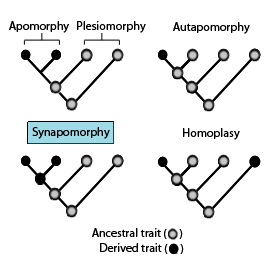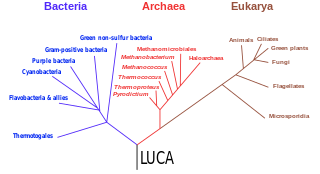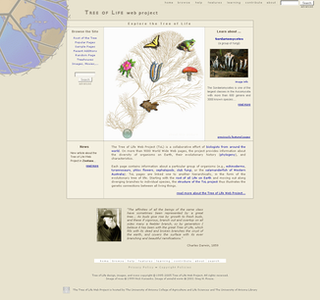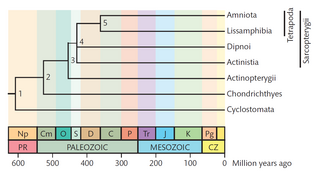Related Research Articles
In biology, phylogenetics is the study of the evolutionary history and relationships among or within groups of organisms. These relationships are determined by phylogenetic inference methods that focus on observed heritable traits, such as DNA sequences, protein amino acid sequences, or morphology. The result of such an analysis is a phylogenetic tree—a diagram containing a hypothesis of relationships that reflects the evolutionary history of a group of organisms.

Pittsburgh is a city in the Commonwealth of Pennsylvania and the county seat of Allegheny County. It is the second-most populous city in Pennsylvania after Philadelphia and the 68th-most populous city in the U.S. with a population of 302,971 as of the 2020 census. The city anchors the Pittsburgh metropolitan area of Western Pennsylvania. Its population of 2.457 million is the largest in both the Ohio Valley and Appalachia, the second-largest in Pennsylvania, and the 26th-largest in the U.S. Pittsburgh is the principal city of the greater Pittsburgh–Weirton–Steubenville combined statistical area that extends into two neighboring states, Ohio and West Virginia.

A phylogenetic tree, phylogeny or evolutionary tree is a graphical representation which shows the evolutionary history between a set of species or taxa during a specific time. In other words, it is a branching diagram or a tree showing the evolutionary relationships among various biological species or other entities based upon similarities and differences in their physical or genetic characteristics. In evolutionary biology, all life on Earth is theoretically part of a single phylogenetic tree, indicating common ancestry. Phylogenetics is the study of phylogenetic trees. The main challenge is to find a phylogenetic tree representing optimal evolutionary ancestry between a set of species or taxa. Computational phylogenetics focuses on the algorithms involved in finding optimal phylogenetic tree in the phylogenetic landscape.

Downtown Pittsburgh, colloquially referred to as the Golden Triangle, and officially the Central Business District, is the urban downtown center of Pittsburgh, Pennsylvania, United States. It is located at the confluence of the Allegheny River and the Monongahela River whose joining forms the Ohio River. The triangle is bounded by the two rivers.

In phylogenetics, an apomorphy is a novel character or character state that has evolved from its ancestral form. A synapomorphy is an apomorphy shared by two or more taxa and is therefore hypothesized to have evolved in their most recent common ancestor. In cladistics, synapomorphy implies homology.

The last universal common ancestor (LUCA) is the hypothesized common ancestral cell from which the three domains of life, the Bacteria, the Archaea, and the Eukarya originated. It is suggested to have been a "cellular organism that had a lipid bilayer and used DNA, RNA, and protein". The LUCA has also been defined as "a hypothetical organism ancestral to all three domains". The LUCA is the point or stage at which the three domains of life diverged from preexisting forms of life. The nature of this point or stage of divergence remains a topic of research.
The tree of life is a motif in various mythologies and a metaphor for the common descent of life on Earth.
The Duquesne Dukes are the athletic teams of Duquesne University of Pittsburgh, Pennsylvania. The Dukes compete in Division I of the National Collegiate Athletic Association as members of the Atlantic 10 Conference. Football and bowling, however, compete in the Northeast Conference.

The Tree of Life Web Project is an Internet project providing information about the diversity and phylogeny of life on Earth.
The tree of life or universal tree of life is a metaphor, model and research tool used to explore the evolution of life and describe the relationships between organisms, both living and extinct, as described in a famous passage in Charles Darwin's On the Origin of Species (1859).
The affinities of all the beings of the same class have sometimes been represented by a great tree. I believe this simile largely speaks the truth.
Many scientists and philosophers of science have described evolution as fact and theory, a phrase which was used as the title of an article by paleontologist Stephen Jay Gould in 1981. He describes fact in science as meaning data, not known with absolute certainty but "confirmed to such a degree that it would be perverse to withhold provisional assent". A scientific theory is a well-substantiated explanation of such facts. The facts of evolution come from observational evidence of current processes, from imperfections in organisms recording historical common descent, and from transitions in the fossil record. Theories of evolution provide a provisional explanation for these facts.

The Thomas R. Kline School of Law of Duquesne University is a private Catholic university law school located in Pittsburgh, Pennsylvania. It is approved by the American Bar Association and is a member of the Association of American Law Schools. Dean April M. Barton joined the school in 2019 as its 13th dean.

The Polypodiidae, commonly called leptosporangiate ferns, formerly Leptosporangiatae, are one of four subclasses of ferns, the largest of these being the largest group of living ferns, including some 11,000 species worldwide. The group has also been treated as the class Pteridopsida or Polypodiopsida, although other classifications assign them a different rank. Older names for the group include Filicidae and Filicales, although at least the "water ferns" were then treated separately.

PPG Paints Arena is a multi-purpose indoor arena in Pittsburgh that serves as the home of the Pittsburgh Penguins of the National Hockey League (NHL). It previously was the home of the Pittsburgh Power of the Arena Football League (AFL) from 2011 to 2014.

The City Game is an annual college basketball game between the University of Pittsburgh Panthers and the Duquesne University Dukes. The term "City Game" is also used refer to women's basketball games played annually between the two universities and may also be used to refer to other athletic competitions between the two schools.
ThePartnership in Education is a non-profit multidisciplinary health literacy and informal science education project based at Duquesne University in Pittsburgh, Pennsylvania. The Partnership in Education produces planetarium shows and other multimedia that focus on topics in health and biology.
John A. Pollock, is a Full Professor of Biological Science at Duquesne University Bayer School of Natural and Environmental Sciences, where he researches and teaches molecular neurobiology. He is Principal Investigator for The Partnership in Education, a non-profit multidisciplinary health literacy and informal science education project at Duquesne University funded primarily through a Science Education Partnership Award(SEPA) from the National Institute of General Medical Sciences, a component of the National Institutes of Health.

The following outline is provided as an overview of and topical guide to evolution:

A timetree is a phylogenetic tree scaled to time. It shows the evolutionary relationships of a group of organisms in a temporal framework.
Joana Ricou is an artist from Portugal but currently resides in Brooklyn, New York. She studied biology and art at Carnegie Mellon University in Pittsburgh, Pennsylvania, where she received a Bachelor of Arts and Science in 2004. She also received a Master of Science from Duquesne University, also in Pittsburgh, in 2009.
References
- ↑ Commisso, Danielle (Summer 2009). "Honoring Darwin at Duquesne University" (PDF). Flight Path: The Bulletin of Conservation and Field Research at the National Aviary. Retrieved 26 August 2011.
- ↑ "The 'Spiral of Life' Mural Series" (PDF). Darwin 2009 February Newsletter. February 2009. Retrieved 26 August 2011.
- ↑ Templeton, David (February 6, 2009). "Darwin's 200th Birthday Celebrated". Pittsburgh Post-Gazette. Retrieved 26 August 2011.
- ↑ "Bibliography for Spiral of Life" (PDF). Retrieved 26 August 2011.
- ↑ Ricou, Joana; et al. (September 2010), "Evaluation of a Mural Series on the Evolution of Life", International Journal for Cross-Displinary Subjects in Education
- ↑ Commisso, Danielle (Summer 2009). "Honoring Darwin at Duquesne University" (PDF). Flight Path: The Bulletin of Conservation and Field Research at the National Aviary. Retrieved 26 August 2011.
- ↑ "The 'Spiral of Life' Mural Series" (PDF). Darwin 2009 February Newsletter. February 2009. Retrieved 26 August 2011.